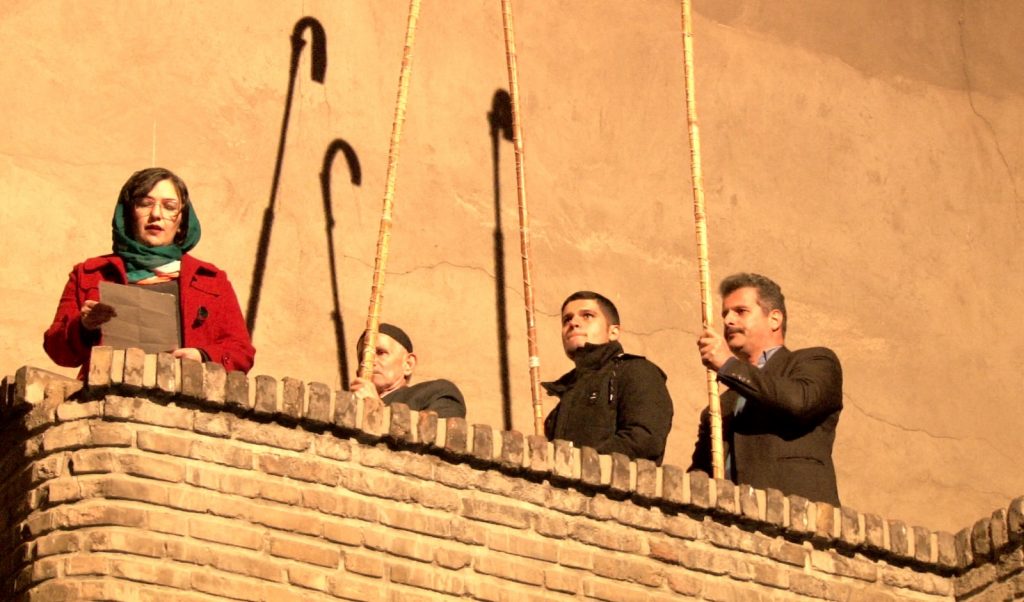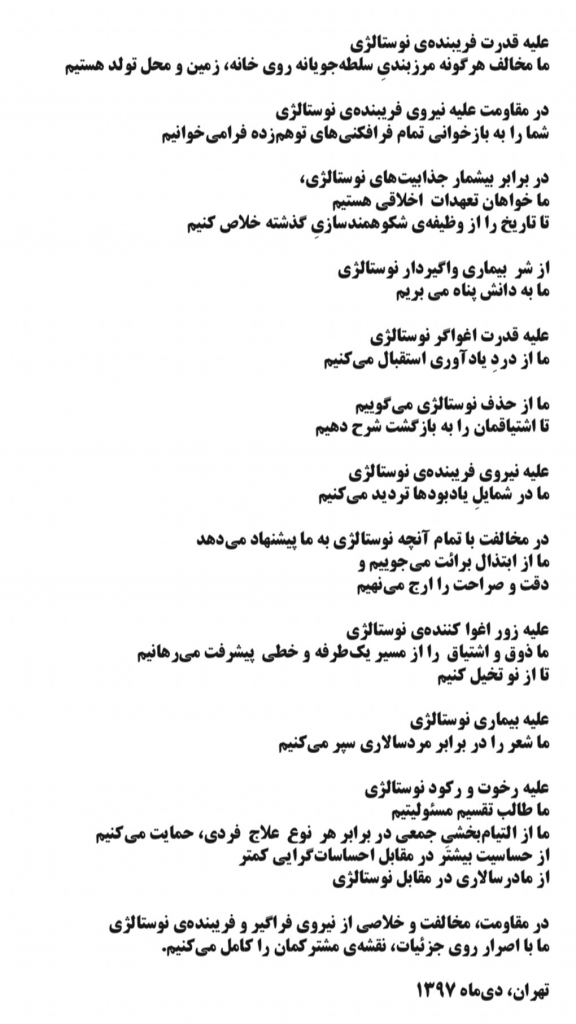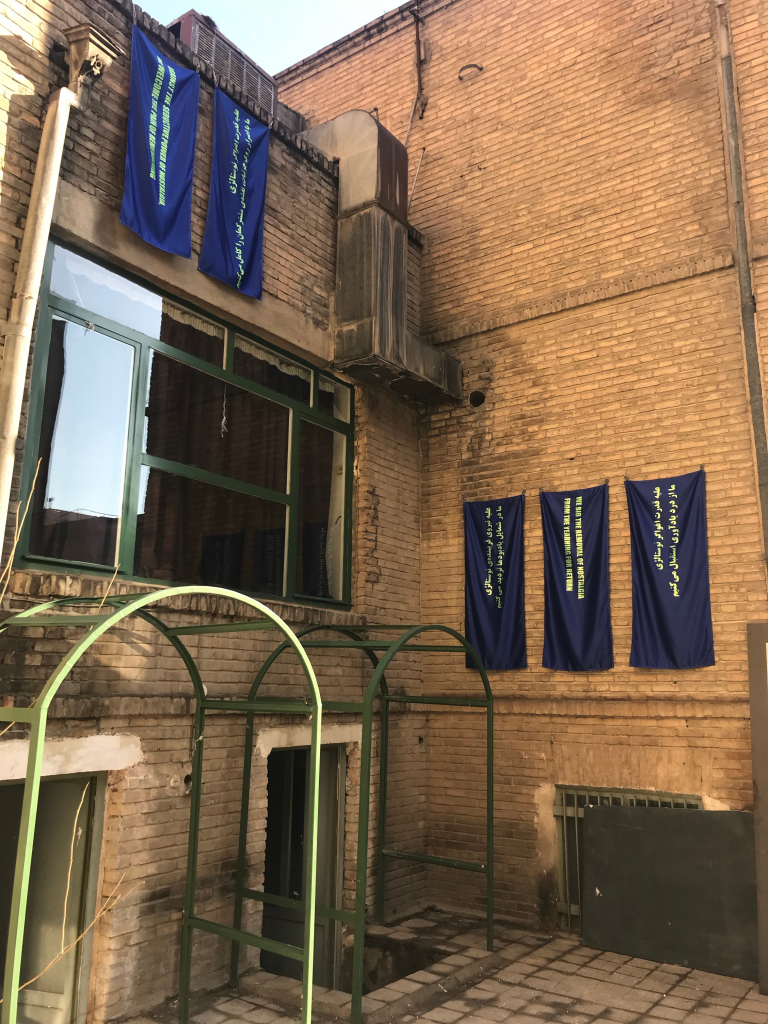Giulia Crispiani, Golrokh Nafisi, Ahmadali Kadivar
January 2019

Twelve printed flags (60x150cm each)
Led sign Message Board (add measures)
Performance (10′)
Conceived by Giulia Crispiani and Golrokh Nafisi
Translated into Farsi by Ahmad Ali Kadivar, Sam Samiee and Golrokh Nafisi
Translated to Karna tones by Ahmad Jafari and Ahmad Ali Kadivar
Karnas played by Akbar Sohrabi, Mohamad Ebrahim Abdollahi, Mohamad Reza Abdollahi
But We Don’t Leave Pyramids
Curated by Gaps for Tehran Curatorial Symposium
Charsoohonar, Tehran
A Manifesto Against Nostalgia is the result of a long term and ongoing conversation between Golrokh Nafisi and Giulia Crispiani. The urgency behind taking this stand has born from considering nostalgia to be a tool and a prepackaged sentimental set widely adopted by authoritarian and fascist rhetorics today, to be regarded as something distinct from yearning and longing. Going toward a future oversaturated with images, the current rhetoric often relies on the glorification of—and a sort of nostalgia for a past that was never there. A Manifesto against Nostalgia aims at suggesting alternative folds on the theme, beside the usual linear vector going from the past to a future, in order to reframe the relationship between individual agency and collective imagination.
The manifesto is a pretext to open a conversation on major themes such as us time and power structures, which have been thoroughly taken into consideration during the formalization of the performance.
The proclamation act was performed at Charsoonar, with the accompaniment of the Karna players Akbar Sohrabi, Mohamad Ebrahim Abdollahi and Mohamad Reza Abdollahi, from the Guilan province of Iran. The Karna is traditional Iranian instrument, a long trumpet made of reed, that was originally used for public announcements and played in mourning ceremonies, and later on adopted in theatre and festivals.
Following the translation from English to Farsi, the content of the Manifesto underwent a second translation, from Farsi to Karna tones, happened thanks to the precious help of Ahmad Ali Kadivar. In this phase, the players needed to understand the overall meaning of the text, so that they could play it in a sentence, a refrain to all the twelve statements. The sentence eventually chosen was “Recount your Yearning for Return / شرح اشتیاق به بازگشت”. It is important to mention that the Karna does not play music but words, and the audience was able to clearly grasp the sound and meaning of the sentence [English phonetic: Sharh e Eshtiyagh be bazgasht]
Considering the privilege to perform at Charsoohonar’s new location, in a traditional modernist house from the 30s—with a pretty rare background view in contemporary Tehran, the attempt was to activate the space in its entirety, by using the rooftop and the balcony. The suggestion provoked was the depiction of two mothers talking to each other from their respective balconies, in a miniature illustration. Influenced by and aspiring to belong to the visual dynamic of the city of Tehran, twelve seemingly-institutional flags carrying some quotes from the manifesto were left to occupy the space reminiscent of the proclaiming act for the whole duration of the exhibition, as well as a green led sign, with an excerpt from the manifesto is left scrolling in loop.
For Farsi click here.



